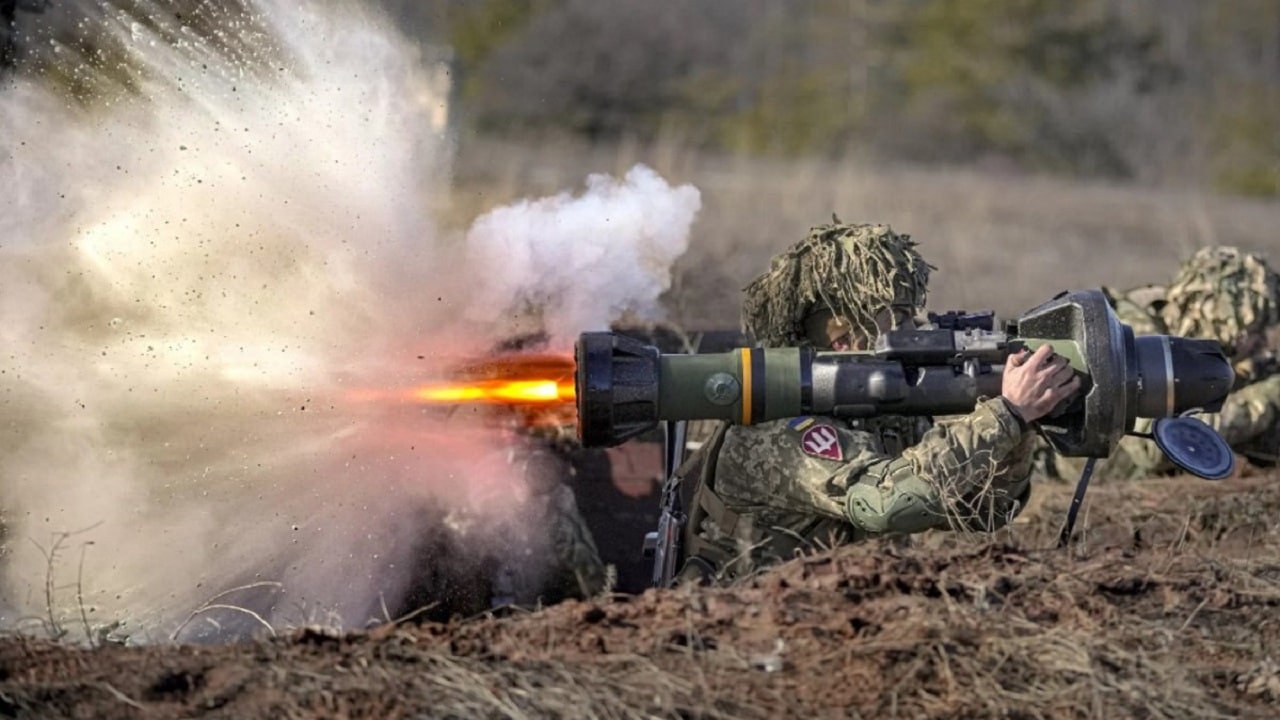Additional NLAW are among the anti-tank weapons that Canada pledged to send to Ukraine this week. During a joint press conference with Ukrainian President Volodymyr Zelenskyy, Canadian Prime Minister Justin Trudeau affirmed his country’s continued support for Ukraine, adding that Ottawa will continue to supply weapons and ammunition.
“We will provide everything needed and fund demining efforts,” Trudeau said during a working visit to Kyiv on May 8.
As well as providing new NLAW and other weapons to Ukraine, Trudeau revealed that he would lift trade tariffs on all Ukrainian imports for one year, in an effort to aid Ukrainian industry. He added that Canada will levy further sanctions against Russian business leaders, oligarchs, and associates of Russian President Vladimir Putin.
What is the NLAW?
NLAW, which stands for Next Generation Light Anti-tank Weapon, is a shoulder-fired, single-use missile system designed for use by a single troop. Weighing only 28 pounds and firing a 14 pound missile with a 4 pound warhead, the NLAW is also a fire-and-forget weapon. That means the missile uses a Predictable Line of Sight guidance system.
The weapon allows an infantryman to track a target for three to five seconds using the missile launcher’s onboard sight. The missile then uses its own hardware and software to measure the target based on the data gathered during the short tracking process. It plots a route and works to intercept, even if the target is moving.
NLAW can attack from above or from the side. It is built by Sweden’s Saab Bofors Dynamics.
Defying Expectations
On Jan. 19, with Russia’s invasion of Ukraine still more than a month away, British Defense Secretary Ben Wallace told journalists that 2,000 NLAW had already been donated to Ukraine, and shipments of the weapon would continue. But some analysts predicted that the NLAW missiles the United Kingdom had already donated might not be immediately useful. Writing for Forbes, Sebastien Roblin speculated that the missiles “may only be useful in desperate circumstances.”
While the NLAW has a longer range and greater accuracy than Soviet-made rocket-propelled grenade systems and light anti-tank weapons, Roblin noted that the missile is less effective at long range than Javelin and Kornet missile systems, which can destroy armored vehicles and tanks from several miles away.
“Unfortunately for Ukraine, modern Russian “non-contact warfare” military doctrine emphasizes destroying enemy forces from long distances with artillery supported by drone surveillance assets, rather than aggressively pushing tanks and infantry forward to engage with direct fire,” he wrote. Roblin added that the Ukrainian military would be better served using weapons that can strike from a distance too great for Russian forces to shoot back.
However, along with the Switchblade drones and Javelin missile systems donated by the United States, NLAW anti-tank missiles have proven highly effective in the war so far.
Ukraine estimates that 30%-40% of the 600 tanks lost by Russia were destroyed by NLAW missiles, making them a weapon of choice for many Ukrainian fighters.
Jack Buckby is a British author, counter-extremism researcher, and journalist based in New York. Reporting on the U.K., Europe, and the U.S., he works to analyze and understand left-wing and right-wing radicalization, and reports on Western governments’ approaches to the pressing issues of today. His books and research papers explore these themes and propose pragmatic solutions to our increasingly polarized society.

